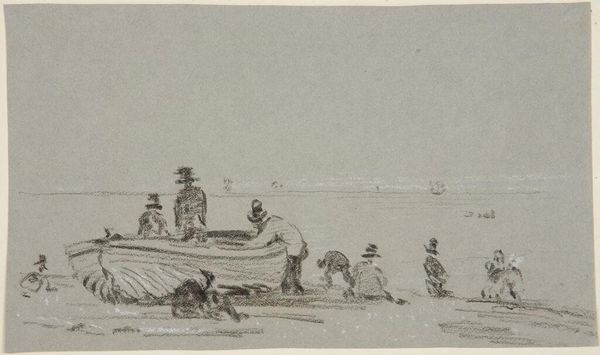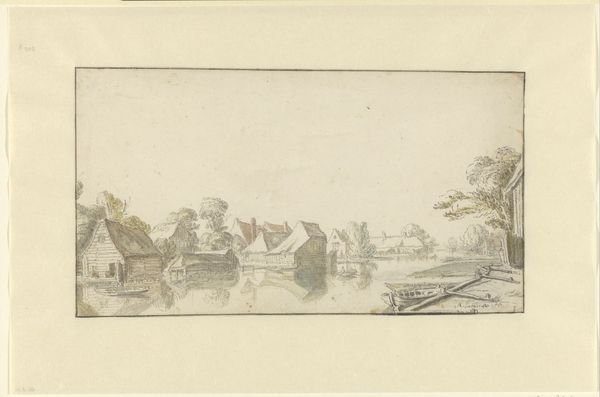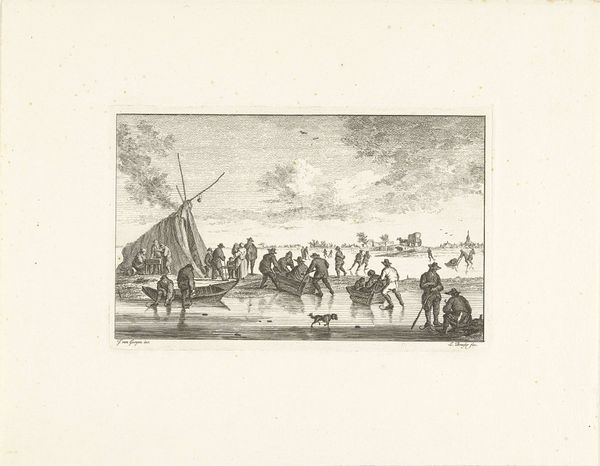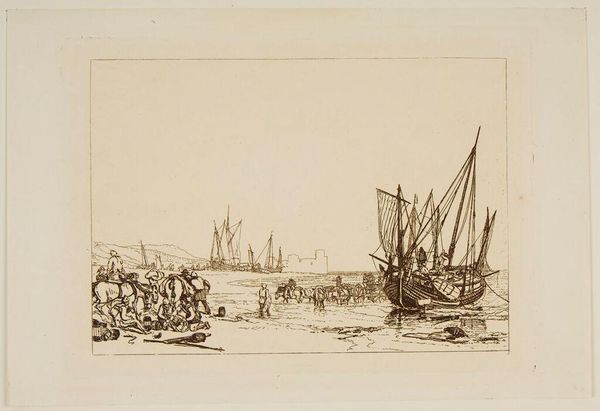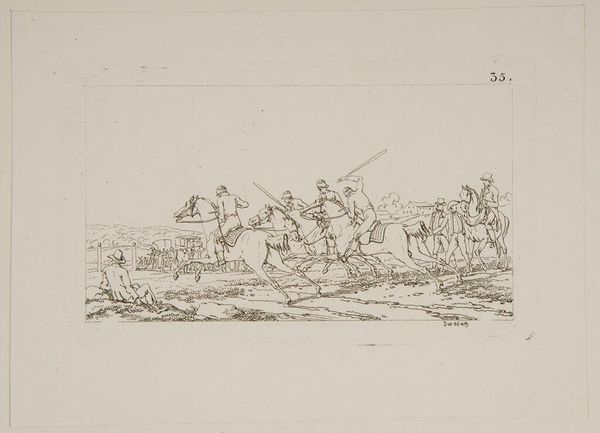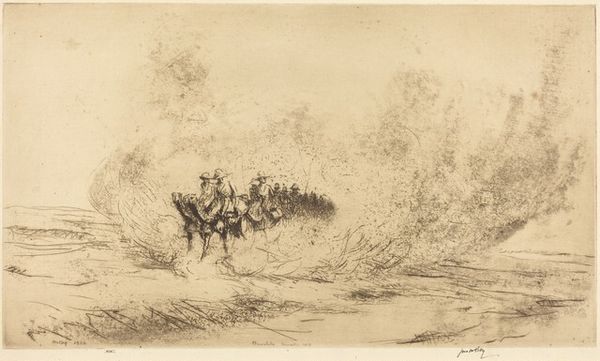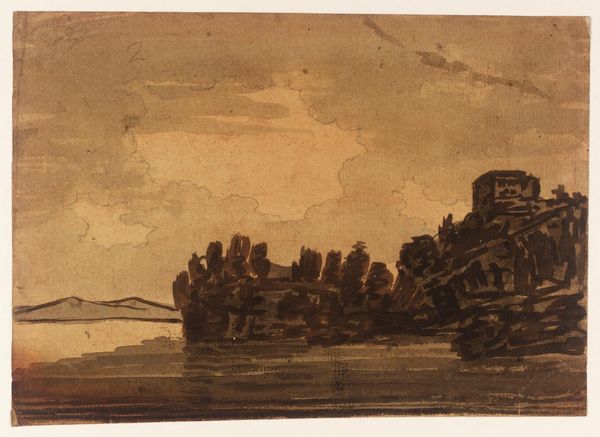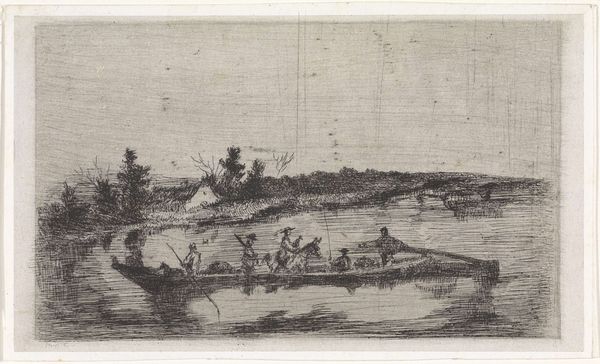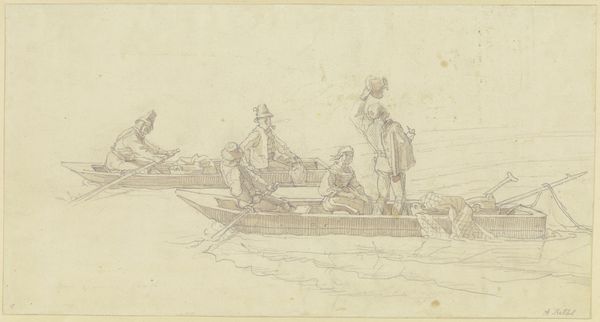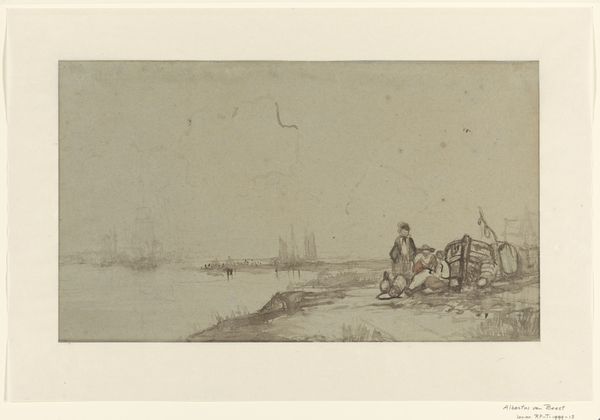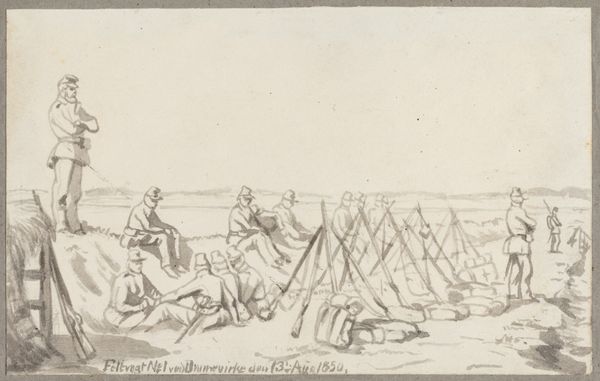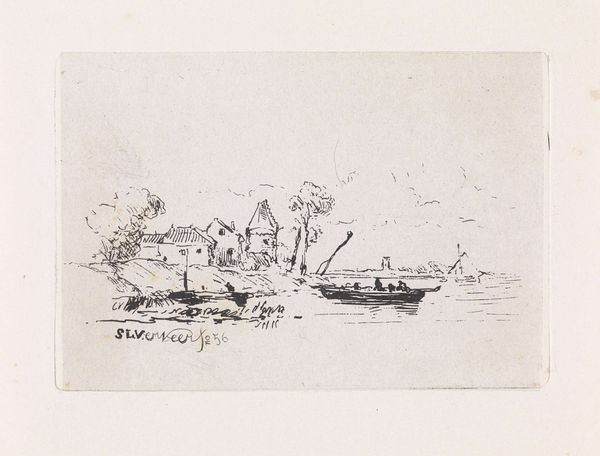
Plate XIV c. 19th century
Copyright: CC0 1.0
Curator: Before us is Johann Caspar Nepomuk Scheuren's "Plate XIV," currently held in the Harvard Art Museums. Editor: The starkness and the linear quality create a mood of quiet observation, wouldn't you say? Curator: Indeed. Notice how the artist uses the etched line to create a sense of depth, placing one boat behind the other, leading the viewer’s eye across the water. Editor: It certainly speaks to the era's colonial power dynamics— the figures standing with spears in the boat as a symbol of domination and control, surrounded by subordinates. It makes me wonder about the indigenous populations impacted by these voyages. Curator: Undoubtedly, we are presented with a narrative open to interpretation. The formal construction, with the horizon line cutting through the middle, provides a balanced symmetry to the composition. Editor: Absolutely, but also a powerful reminder that aesthetics are never neutral; they're always embedded in complex histories. Curator: Precisely, and by examining the formal elements alongside historical context, we achieve a fuller understanding of Scheuren’s work. Editor: It’s a testament to how art can reflect, but also mask, the socio-political currents of its time.
Comments
No comments
Be the first to comment and join the conversation on the ultimate creative platform.
